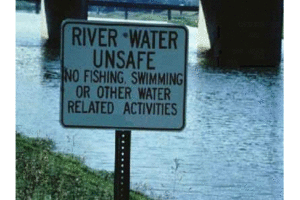Social science and defying the choice between clean and affordable water
Warning: sports cliché coming.
Boxing is more popular as a literary metaphor than as a spectator sport these days. Still, I’m a boxing fan. The combination of athleticism, strategy, and drama of the sport are unrivaled.
Every fighter wants to win, naturally. But there’s no shame in losing a hard-fought bout to a tough opponent. When you take on great opponents, sometimes you lose—on the scorecards, by stoppage, or by knockout. Fans greatly respect unbeaten fighters, but revere those who risk a blemished record to take on the toughest challengers. Most beloved are those who suffer early knockdowns to come back and win. The one kind of loss that boxing fans can’t abide is quitting on the stool: when a fighter chooses not to continue—not because he’s injured, not because his trainer decides he can’t win, but because he lacks the will to continue.
Technical triumph, political pessimism
Last month I participated in an all-day meeting with a group of professors from across the country, all of whom work on drinking water and water quality. We were hashing out a vision for future research to advance the water sector. I was one of just two social scientists in the room; the rest were civil, chemical, and environmental engineers. It was a stimulating and productive day.
But a remark by a renowned professor emeritus from one of America’s top schools of environmental engineering startled me, and has been nagging at me ever since.
“We are facing a future where we’ll simply need to accept higher levels of pollution,” he said. The Clean Water Act’s vision of fishable-and-swimmable waters was unattainable, he argued. His pessimism was not due to the emergence of new, impossibly difficult contaminants or technological barriers. The obstacles to clean water he identified were political and economic: the country simply wouldn’t pay for solutions to pollution. I’m not sure if all his fellow engineers agreed, but more than one head nodded in agreement.
Such pessimism is ironic, coming from an environmental engineer.
Speculative augmentation
One of the most astonishing things about the 1972 Clean Water Act and 1974 Safe Drinking Water Act is that, at the time Congress passed them, nobody really knew how any of it was going to work. The technology needed to achieve fishable-and-swimmable and to ensure safe drinking water nationwide simply didn’t exist at the time. Political scientist Charles Jones called this process speculative augmentation: politicians called for a cleaner environment, and entrusted the bureaucracy and the emerging field of environmental engineering to figure out how to deliver it.
Amazingly, it basically worked. The 20th century was an unprecedented period of advancement for water—it was nothing short of a triumph. Water utilities, sanitary sewers, and stormwater management saved more lives than all the world’s hospitals, and has done more to improve quality of life than any other economic policy. For all their problems, the CWA and SDWA have been pivotal in making those improvements in America. We owe much of that success to engineering research.
Environmental science and social science
The greatest water quality challenges of the 20th century were chemical, biological, and physical. Those challenges remain, and new water quality threats emerge all the time. But the most formidable obstacles ahead are social and political. We know how to handle water contaminants. We don’t know nearly as much about overcoming political barriers to water quality. That isn’t a reason to despair, it’s a reason to refocus.
Medical researchers aren’t paid to declare that diseases are incurable; water researchers shouldn’t counsel acceptance of pollution because politics are hard.
We are a prosperous and resourceful people. I refuse to choose between water quality and affordability. To do so would be to consign society’s most vulnerable and future generations to suffer because we couldn’t or wouldn’t solve institutional problems. If dysfunctional politics force such choices, then we need rigorous, hard-headed research on water politics, policy, management, and finance to overcome them. There are lots of smart and insightful social scientists working on water; we need more. We need another moment of speculative augmentation, this time with social science finding the path forward.
The clean water fight’s not over—we’ve only just started the middle rounds.
Never quit on the stool.


